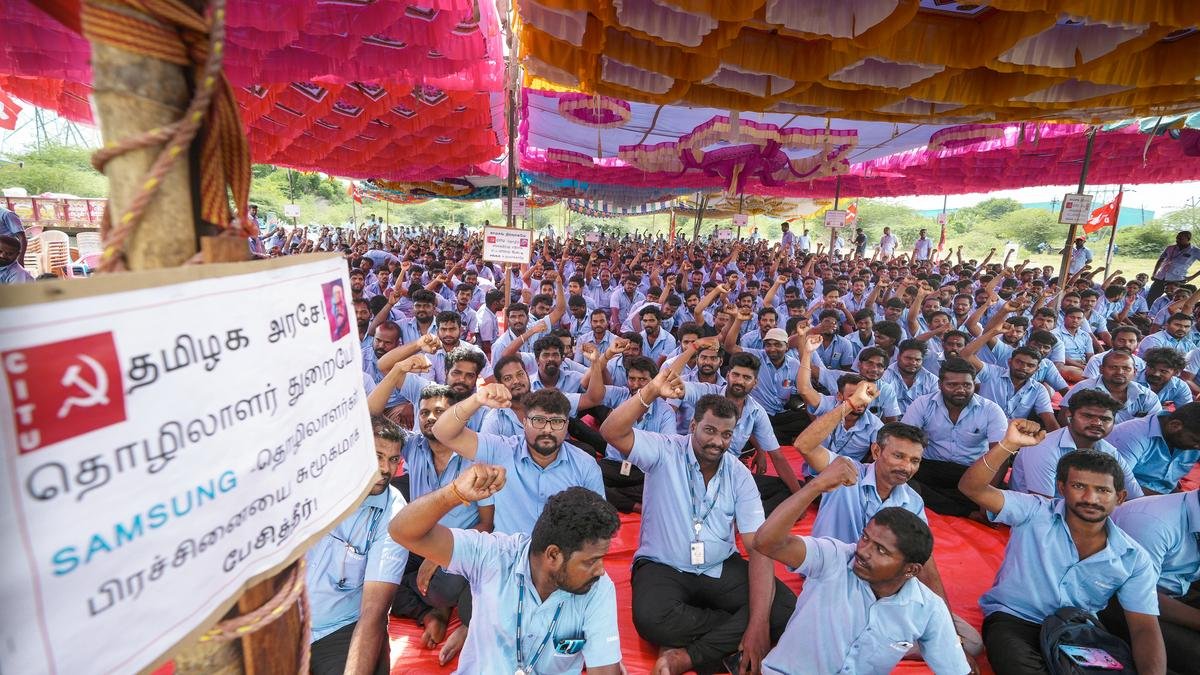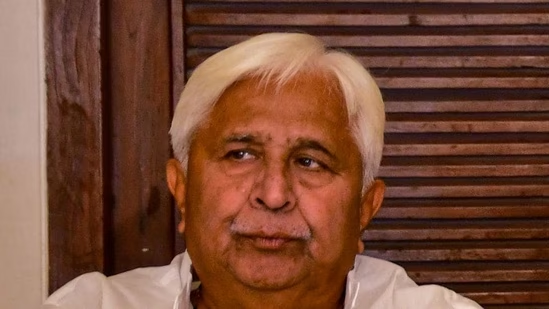Strikes are a familiar occurrence in many industrialized countries, where the count of factories remains consistently high and even shows signs of growth.
Samsung India Electronics’ factory in Sriperumbudur, near Chennai, faced a labor strike lasting over a month, reigniting the debate on the adverse effects of strikes on businesses. The company estimated a staggering $100 million loss in the Madras High Court attributing it to the workers’ strike for union recognition. The strike finally concluded on October 15, as confirmed by the Tamil Nadu government.
The State’s industrial climate was significantly impacted by the strike, raising concerns about potential threats to future industrial investments. Despite this, statistics indicate that worker strikes are prevalent in many industrialized States, where the number of factories is consistently high and showing growth.
During the timeframe spanning from 2008 to 2018, Tamil Nadu stood out as the state witnessing the highest frequency of industrial strikes. Interestingly, it was also the region that experienced the establishment of the largest number of factories and the highest employment of factory workers. This scenario challenges the notion that strikes inevitably have negative implications for businesses.
Between 2008 and 2018, the Union Labour Ministry has compiled dependable data on workplace conflicts on a state-by-state basis. This analysis focuses on that specific timeframe. Notably, Tamil Nadu stands out during the years 2008 to 2018, accounting for more than 26% of total strikes initiated, surpassing all other states by a significant margin.
In the time span between 2008 and 2018, Chart 1 visualizes the distribution of industrial strikes on a state level and the consequent repercussions on wages, mandays, and production. Each state is represented by a circle, with positioning further to the right indicating a greater proportion of strikes, lost mandays, reduced wages, and decreased production within India.
During that period, the State accommodated 16% of India’s manufacturing facilities and a corresponding percentage of the country’s industrial workforce, surpassing other States by a significant margin once more.
During the 2008-2018 period, this ranking chart illustrates the industrialization indicators of various States. Each State is represented by a circle, with those positioned further to the right indicating a greater share in India’s factories, factory workers, total factories’ GFCF, and overall profits.
According to the data depicted in Chart 1, Maharashtra hosted 17% of employees participating in strikes in India during the specified period, ranking as the second-highest state in this aspect. Tamil Nadu led in the proportion of man-days lost due to strikes, accounting for 15% of the country’s total. When it comes to the value of production hindered by strikes, Gujarat took the lead with 24% of total losses. Additionally, Gujarat stood as the state with the second-highest number of strikes initiated.
Chart 1 highlights the prominent position of Tamil Nadu, Maharashtra, and Gujarat as leading states in terms of strikes. Interestingly, these states also stand out nationwide for their strong indicators of industrial development, as illustrated in Chart 2. In metrics like the establishment of factories and employment of workers, Tamil Nadu, Maharashtra, and Gujarat secure the top positions, respectively.
They are also at the forefront in Gross Fixed Capital Formation (GFCF) for factories, a metric that gauges net investment in fixed assets like machinery, serving as an indicator of a company’s well-being and efficiency. Furthermore, their contribution to the total profits of India’s industries surpasses that of other states.
Between 2008 and 2018, Tamil Nadu saw an increase in the proportion of worker strikes and a rise in the State’s contribution to the total number of factories in India. Specifically, in 2008, Tamil Nadu accounted for 28% of worker strikes nationwide, a figure that increased to 30% by 2018, consistently ranking the State at the top in this regard. Concurrently, the share of India’s factories located in Tamil Nadu increased from 14% to 16% during the same period, with the State maintaining its leading position in this aspect throughout both years.
India, with a trade union density rate of approximately 20%, does not rank among the top 50 economies by this metric. The country’s rate falls short of China’s 44.2%, despite China being a highly industrialized nation.
Chart 3 displays the trade union density rates in percentage across BRICS countries based on the most recent available data.
Iceland takes the lead among advanced Scandinavian economies in terms of unionization, with more than half of its workforce being part of a union.
Chart 4 displays the top ten nations ranked by their trade union density rates, measured in percentages.










